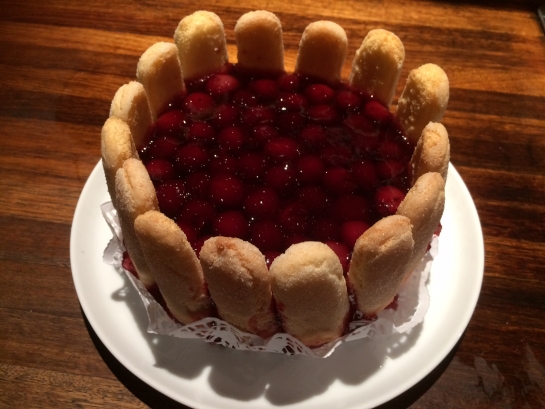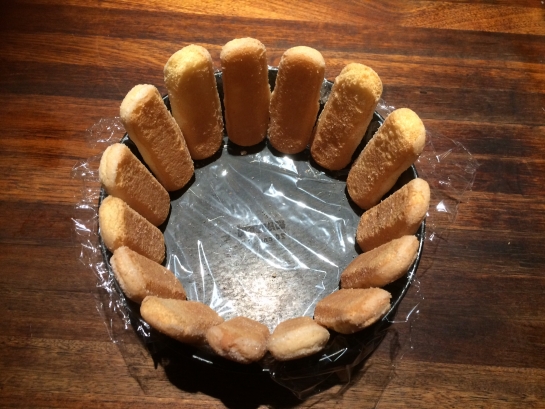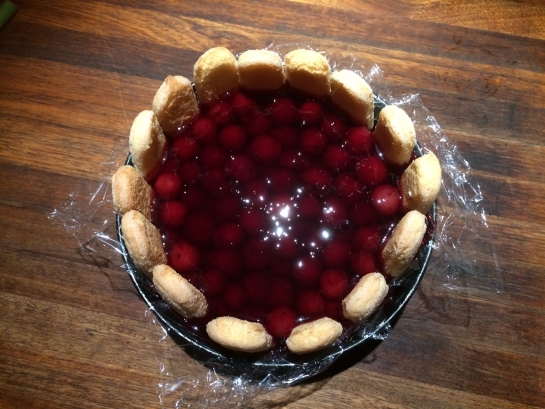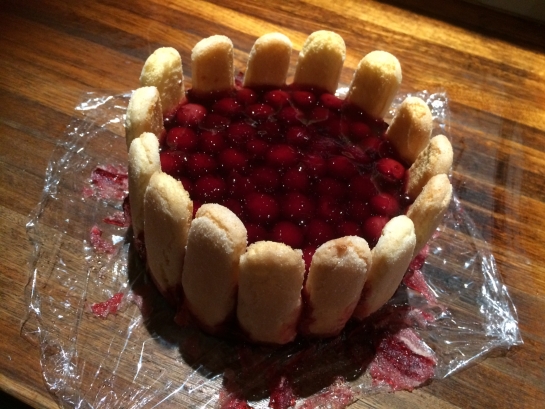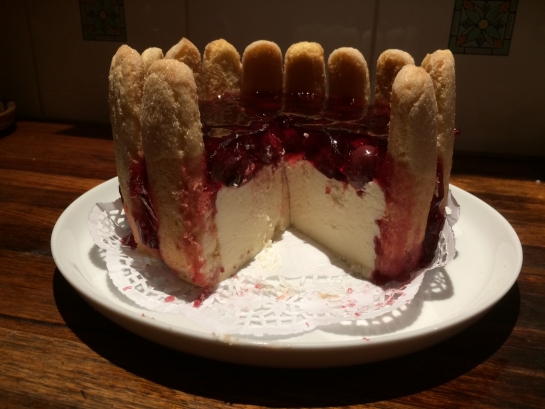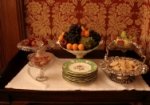Judging by menu cards from the late 1800s, Charlotte Russe was the glamour dessert on fashionable New South Wales’ dining tables. Thanks to the various ‘bake-off’ programs reviving traditional ‘classics’, the Charlotte Russe is certainly a dish worth reviving!Visually impressive, the Charlotte Russe seems like a complicated dish; however, although it is made in several stages, thanks to commercial gelatine products it actually requires little culinary skill. Recipes vary, but essentially they are a sponge cake or finger biscuit crust filled with ‘set cream’, that is, cream or custard set with gelatin or other setting agent, and a clear jelly or fruit topping. Some are open topped, others closed, and some inverted, to give a smooth cake-like finish. I rather like the crown affect that the sponge fingers give.
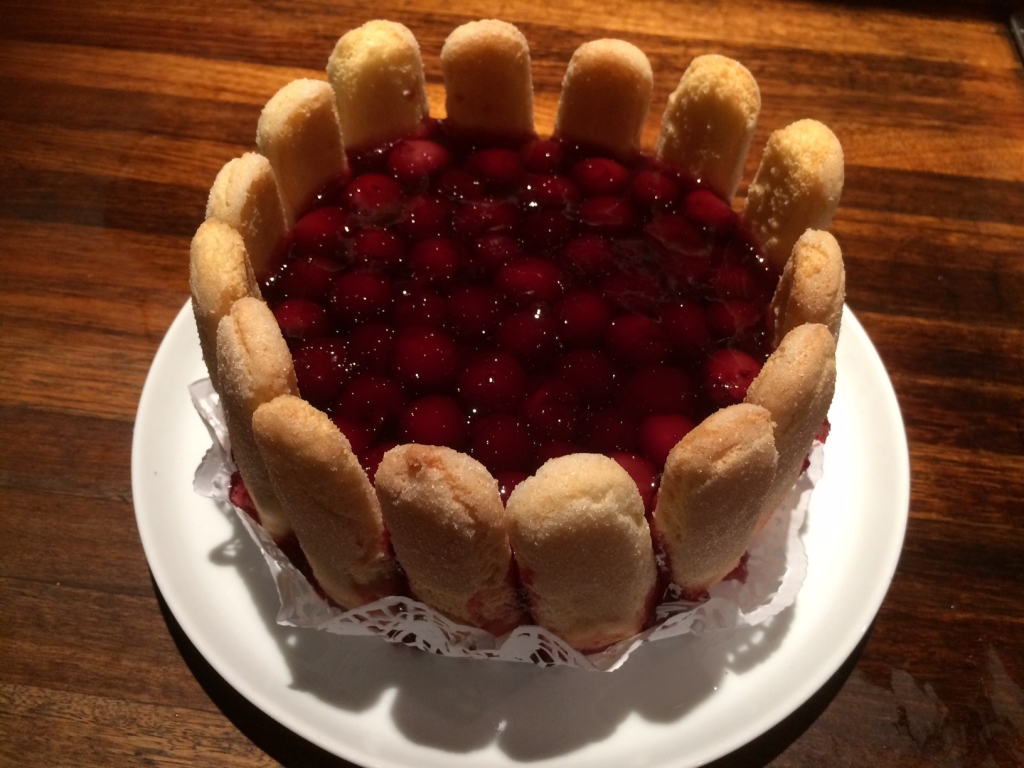
A Charlotte Russe Photo Jacqui Newling © Sydney Living Museums
The Charlotte Russe is said to have been an original creation of French celebrity chef Anotine Careme, who made the dish in honour of the Russian Tsar – likely Alexander II, who began his reign in 1801 after his father, Paul I, was assassinated. (A bit of trivia – Alexander was the godfather of the Princess, later Queen, Victoria, who was named Alexandrina Victoria after him. He was also the Tsar who defeated Napoleon in 1812 during his attempted invasion of Russia). Here he is as Grand Duke, the year before he took the throne:

Portrait of Grand Duke Alexander Pavlovich of Russia. Vladimir Borovikovsky, 1800. Image source Wikipedia
‘Russe’ in culinary terms means ‘in the Russian style’, or commemorates a Russian identity or historic event. We’ve talked about dining ‘a la Russe’ on many occasions. While there were several Charlottes in the wider Russian royal family at the time of this dessert’s invention, the name may simply relate to the old English ‘charlyt’ – meaning a form of custard.
It is much more stylish than the simpler fruit-filled charlottes and ‘summer puddings’ that use stale bread to line a baking dish or mould and reminiscent of horizontally-layered cream/custard/fruit/jelly trifle. Over time, as ice became more readily available, the set cream was replaced with ice-cream. (‘The Curator’ meanwhile thinks ‘Charlotte Russe’ would make a marvelous culinary drag name!)
I decided to give one a go, using a more traditional version, with a syllabub-style filling, and preserved cherries set in jelly. My making skills certainly need finessing but I was relatively please with the result, and worth trying to perfect. You’ll notice this one sits a little low in the ‘crown’, so I have increased the volume of cream in the recipe below. As an afterthought, I’d also suggest trimming the bottom curved end off the fingers so that it sits flush with the base.
- Charlotte Russe assembly 1. Photo © Jacqui Newling Sydney Living Museums
- Charlotte Russe assembly 2. Photo © Jacqui Newling Sydney Living Museums
- Charlotte Russe assembly 3. Photo © Jacqui Newling Sydney Living Museums
- Charlotte Russe assembly 4. Photo © Jacqui Newling Sydney Living Museums
- A Charlotte Russe Photo Jacqui Newling © Sydney Living Museums
Charlotte Russe
Ingredients
- 2-3 tablespoons gelatine powder (or according to manufacturers instructions)
- 1l whipping cream
- 1/4 cup caster sugar (or to taste)
- 1 teaspoon vanilla extract
- 1/4 cup liqueur (optional)
- 1 packet sponge finger biscuits (savoiardi or lady's fingers)
- 2 cups fresh, frozen or preserved berries or cherries
- 2 packets port wine or coloured fruit flavoured jelly
- Wide ribbon or d'oyley, to decorate.
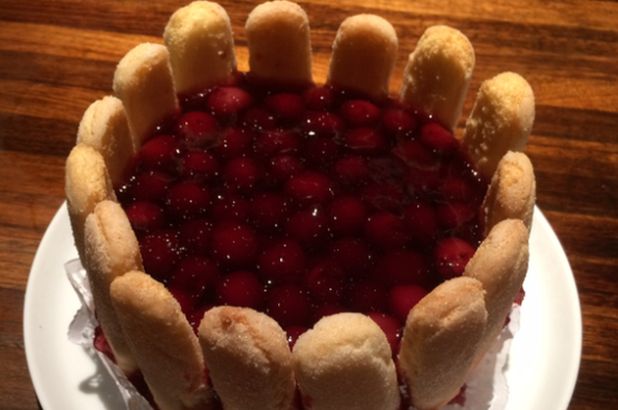
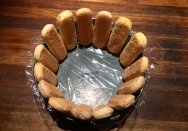
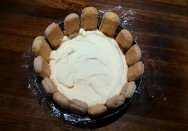
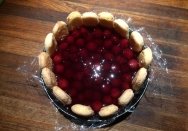


 Print recipe
Print recipe